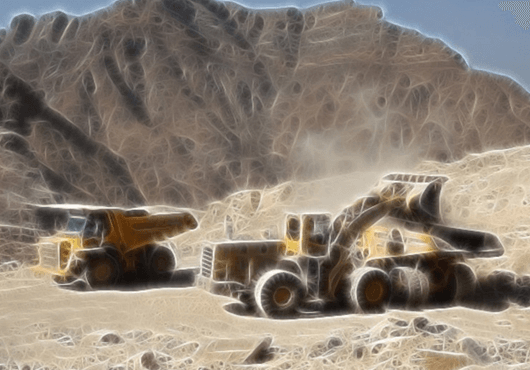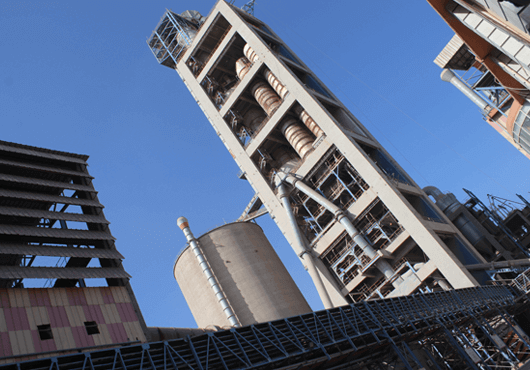Production Lines
Techniques and Methods Followed by the National Cement Company to Handle and Address Environmental PollutantsThe Company follows and uses modern manufacturing technology which was taken into account at the time of designing and installing the plant's components. It also applies this at its production processes in order to use clean coal technology for the protection and conservation of the environment and in compliance with environmental standards prescribed by the World Bank. These are as follows: :


The Electrostatic Precipitators
This type of electrostatic precipitation method relies on applying high voltage increasing to 85 kv on two electrodes (electrical terminals) of the precipitator. The parallel vertical plates are the positive electrodes as they form the whole body of the precipitator while the juxtaposed bars or wires constitute the negative electrodes. These filters operate in order to purify the air from dust and smoke to the lowest possible emission limits to corresponding to the limits allowed by the World Bank specifications ( being (50 cm/ per cubic meter standard).- First: Limestone Crusher and Other Additives Area : in this area, there are a number of small and large dust filters along with spraying water as a separate method to prevent dust from rising at the time of crushing/ stacking/ storing raw materials open stocking area.
- Second: The Area of the Vertical Raw Material Mill At the raw material section, the limestone mixture and other additives (the rawmix)_are ground to smaller and finer materials. They are then transported from one place to another by the conveyor belts, air-driven stave/ slides, the carrying lines. Thus, in this section, there are the environmental control systems. These systems are in the form of a number of small and big dust filters along with an automatic monitoring and measuring device for accurately testing and verifying dust concentrations.
- Third: First Heating Tower Section: the ground rawmix is fed into the first heating tower by air-driven stave/ slides and the carrying lines. Later on, the rawmix is converted to clinker and then cooled rapidly by the passing of the enforced or blown air. At this point, the following takes place:
- Collecting dust emanating from the electronic precipitators unit (ESP) unit
- Transferring of the cooled clinker from the cooler unit to the silo for storage by metal carriers. In this section are a number of small and large dust filters as well as
- Gas analysis device to control and monitor the concentrations of gases such as NOX, CO and O2
- An automatic intelligent monitoring device to monitor the concentration of dust following the electronic precipitators unit.
- Fourth: Cement Mill Section: In this section, clinker and gypsum materials and additives are ground to small particles by the use of grinding balls mills. The cement produced is stored in the cement silos. Additives are transferred by the moving grates. After weighing them, additives are then transferred to the mill while the ground cement is taken to the storage silos via carrying lines. In this section, there a number of pro-environment devices for accurately monitoring and measuring dust concentrations).
- Fifth: Packaging Section: Cement is produced in the storage silos and moved on to two packaging machines by the use of air-driven stave/ slides and the carrying lines. The packed cement bags are then cleaned by using air while resultant dust is cleaned by special collectors.
- Sixth: The Ground Section: In this section, there are a number of filters that work on ventilating the air-driven stave/ slides and the section for bulk cement packing. This section is also responsible for collecting the particles of dust and returning them back into the production lines.


